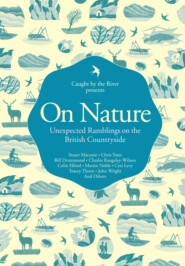По всем вопросам обращайтесь на: info@litportal.ru
(©) 2003-2025.
✖
The Silenced
Автор
Год написания книги
2019
Настройки чтения
Размер шрифта
Высота строк
Поля
But not her. She belonged to a considerably smaller group of people. People who exploit the silence surrounding the dead. Observing. Listening. Understanding.
Everyone has a rhythm, a way they move through life. She learned that in her first year in Violent Crime. With some people you can see their rhythm fairly easily, but others require more concentration. Especially if you’re trying to work out that rhythm in hindsight. Reading it from homes, belongings, bodies, and—not least—crime scenes. It’s easy to let yourself be distracted. Do what most of her colleagues did and concentrate on the things that are yelling for attention. Weapons, accessories, blood, fingerprints. Obvious signs of violence and death.
That’s often enough to get them quite a long way, but sometimes it takes more than that. Sometimes it takes someone like her, who stands completely silent, just listening carefully. Seeking out the tiny details that disturb the rhythm. A glass missing from a cupboard, a belt that’s been fastened wrongly, a small bruise in an odd place, maybe just a lingering smell. Little things that appear to be utterly inconsequential to everyone except her, but that turn out to be the exact opposite when seen in context.
That was how Julia had built her reputation in Violent Crime. Not by talking, shouting orders, or cross-examining suspects. But by listening.
The dead body on the examination table hadn’t yet said anything to her, hadn’t revealed its identity or what sort of life it had lived. Which wasn’t terribly strange, seeing as someone had gone to great lengths to make sure the corpse would stay silent.
To start with, the body was naked. And it had been chopped into fourteen pieces. Twelve of them were on the metal table in front of them. The pathologist had put everything in the correct place. Head, torso, upper and lower arms, thighs, shins, and feet. But because the pieces weren’t joined together, the body looked like a macabre puppet, too absurd to be human.
The skin, which only partially covered the body parts, was gray and half-dissolved. In several places the bones jutted out. The fat, sinews, and muscles that ought to have been around them were either gone or transformed into a pale, soapy sludge out of which seawater was still oozing. It formed small pools on the stainless steel worktop before the law of gravity persuaded the water to start to make its way slowly toward the gullies at the corners of the table.
Where the corpse’s face should have been there was almost nothing left. Just a jagged mosaic made up of splinters of bone, skin, and gristle. The eye sockets gaped empty, the nose was missing altogether, and from the shattered jaw the minuscule stumps of a few teeth poked out. As if the dead body were smiling at them. Grinning at its own wretched condition.
Julia cast another glance at Amante. Stupidly, he had gone back to staring at the body. He seemed almost to be forcing himself to keep his eyes on the leering skull. She wondered if it was a macho thing, that he didn’t want to seem weak in front of her and the pathologist. In which case he was more stupid than he had seemed during their short conversation on the way there.
“The body was found in Lake Mälaren, just outside Källstavik, at a depth of twenty meters. But you already know that.” The pathologist with the Donald Trump hair finally seemed to have found what he was looking for. “Judging by the state it’s in, I’d say the body has been in the water for about four months. I’ll be able to say more after tissue analysis. The bottom-feeders have had plenty of time to do their thing. Most of it has been …”
He gestured toward the corpse as he appeared to consider his choice of words.
“Eaten,” Julia stated before he had time to make his mind up. Amante made a faint whimpering sound, then hid it quickly by clearing his throat.
“Male or female?” Julia said, even though she was already fairly sure of the answer.
“Hard to tell right now,” the pathologist said. “My first impression is that we’re dealing with a man. And the statistics back me up on that. But we won’t know for sure until we’ve taken a closer look at the pelvis.”
“And the t-tool …?” Amante’s voice sounded hollow. He licked his lips a couple of times but couldn’t bring himself to finish the rest of the sentence. In spite of the cool air in the room, a tiny droplet of sweat had formed on his right temple, just below the arm of his glasses.
“Can you say anything about the tool that was used to dismember him?” Julia said.
“A very powerful motorized tool with extremely sharp teeth.”
“A chain saw?” Amante said, making a fresh attempt, this time looking directly at the pathologist instead of down at the table, which seemed to help.
“A chain saw or possibly a reciprocating saw. I’ll know more once we’ve examined the surface of the cuts.”
The pathologist gestured toward the table again, but this time Amante was smart enough not to look down. Instead he quickly wiped the bead of sweat from his temple. He’s a fast learner: extra points for that, Julia thought.
“And presumably it isn’t possible to identify a cause of death as things stand?” she said, mostly as a statement of fact. As expected, the pathologist began shaking his head halfway through her question, which made his comb-over bob like a thin sail of hair.
“Considering the state of the body, it’s extremely doubtful that we’ll ever be able to identify the cause of death,” he said. “Whoever did this …”
The pathologist adjusted his hair as he appeared to ponder how best to continue.
Julia cast a quick glance at Amante to reassure herself that he wasn’t going to give in to the temptation to fill the gap in the conversation. But fortunately he kept his mouth shut and waited for the conclusion. A second bonus point: not bad for a civilian.
“Well …” The pathologist made a face, as if the words in his mouth tasted unpleasant. “I’ve worked here twenty-three years, Gabrielsson. Just like you, I imagine I’ve seen most of the things people are capable of, both toward themselves and others. Over the years I’ve had the dubious privilege of examining at least a dozen dismembered bodies. But this one … This perpetrator’s different. Different from pretty much everything else I’ve ever come across. Just look here, for instance.”
The pathologist pointed at the gap between the torso and one thigh, then at the corresponding gap between the upper arm and shoulder.
“No sign of hesitation on any of the cuts, not even when the perpetrator took the head off.” He moved his forefinger to the even stump above the shoulders. “Depriving someone of their humanity so brutally doesn’t normally happen without a degree of anxiety, and that’s usually clearly visible on the body. Superficial trial cuts, abandoned or failed attempts that demonstrate the technical difficulty of handling the saw, but also the reluctance of the perpetrator. Disquiet at the terrible thing he or she is doing. Do you understand what I mean, Gabrielsson?”
Julia nodded. “But not this perpetrator. He didn’t hesitate.”
The pathologist adopted his bitter expression again.
“No, see for yourself. Thirteen very decisive cuts, one for each joint. All the way through, right through muscle and bone. Whoever did this was in full command of himself and the situation.”
“What about the face, then?” Julia said with a frown, nodding toward the badly ravaged body. “The perpetrator seems to have been rather less in control there. How does that fit your theory?”
The pathologist shook his head hesitantly.
“This is purely speculation, but I’m fairly sure that the condition of the face doesn’t reflect any emotional outburst. The perpetrator simply wanted to make sure that there was no way the body could be identified.”
He pointed at one lower arm, then the grinning jaw.
“Both hands are still missing, and the facial features and teeth have been almost totally destroyed. Which, obviously, makes it impossible to check fingerprints or dental records, or circulate pictures of the victim’s face. Admittedly that does leave us with DNA identification, but—even if we do manage to get a reasonably clean tissue sample—that presupposes that the victim’s profile is already in the police database or that you’ll find another sample to match it against at a later point in the investigation.”
A few moments of silence followed. The air-conditioning rumbled in the background. The low sound was like thunder, gradually creeping closer.
“Add to that the black garbage bags the body parts were wrapped in,” the pathologist went on. “To start with, they were sealed with cable ties rather than tape. No sticky surfaces where forensics experts could find hairs or fibers. And as weights the perpetrator used ordinary gray stones found in any garden or stone wall. Nothing to go on there. And I found small holes here and there in the plastic, probably from a narrow knife blade. If I had to hazard a guess, I’d say there are probably similar holes on the torso of the body. We’ll see once I’ve been able to stretch what remains of the skin across the stomach, but I’m fairly confident.”
“How can you be?” Amante’s voice sounded muffled. “How can you know that the perpetrator stabbed—”
“Because all the body parts were found in a limited area,” Julia said. “In one of the deepest parts of the inlet. Probably in exactly the same spot where the perpetrator dumped them last winter.”
The pathologist nodded.
“The gases given off by decomposition usually make bodies float to the surface after a week or two. A bit longer if the water’s cold; it can take a few months then. In contrast to what most people think, bodies dumped in water usually get washed up on a beach somewhere, and then they get found by a member of the public. Your perpetrator stuck holes in the bags and probably also the torso, where the decomposition is most noticeable. That way the gases were able to escape and the body parts stayed where they were down on the bottom. And the holes would also make it easier for scavengers to get in and do their thing. We’ve got half a bucket full of various bottom-feeders that made their way inside the bags. A few more months underwater and there wouldn’t have been much left.”
“You’re saying that our perpetrator is someone who knows exactly what they’re doing,” Julia said.
The pathologist held his hands up in front of him in a gesture that managed simultaneously to convey agreement and dissociation.
“Like I said, this is all speculation. All I can say is that this scenario is unlike anything I’ve come across before. If those two yachtsmen hadn’t lost their anchor in that inlet and decided to dive down to get it, this poor soul would never have been found.” He nodded toward the table. “Imagine the shock when they realized what they’d stumbled across down there in the darkness.”
Amante cleared his throat again and looked like he wasn’t having any trouble at all imaging the men’s horror.
Julia ignored him and looked back at the table again, where the dead body grinned at her with its wrecked smile. She had to admit that the pathologist’s theory was good. Logical, in light of the evidence. The perpetrator appeared to be extremely methodical, ice-cold in his thoroughness and attention to detail. But she still couldn’t shake the feeling the grimacing face gave her. A feeling of rage, of hatred.
Someone wanted you to disappear, she thought. Wanted to make sure you’d never be found. Someone you’d upset so badly that he destroyed your face. That’s what happened, isn’t it?
The dead body didn’t answer. Just went on smiling at her, as if her words amused him.
* * *
Twenty-two pills. Twenty-two white, oblong pills that he’d paid for with just as many nightmare-filled nights.











